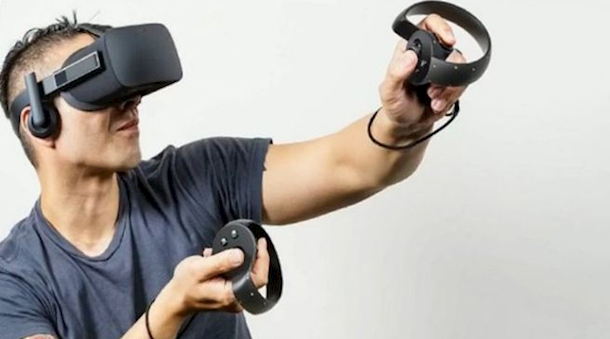5 Industries That Virtual Reality Will Soon Impact
By Jim Bask
Virtual reality (VR) has slowly been coming into its own in the last several years. These days, anybody can buy a VR headset compatible with a smartphone and dive into an immersive game experience. VR isn’t just for gaming anymore, however—it’s also making a splash in several industries. It’s a growing market, and with 685 VR startups diligently advancing the technology, the VR market is expected to be worth about $30 billion by 2020. So what’s the next step for VR? Most likely, we’ll see a shift in the number of industries that begin to focus on using VR.
Here are 5 industries that could see the impact of VR in the near future.

1. Education
Engaging students has always been a challenge for educators, especially students that have different learning styles from their peers. VR presents some exciting opportunities for educators, and is already available for classroom use. Many of the curriculum packages that have been used so far have been in the “hard sciences”, like astronomy, biology, and geology, or in architectural modeling, because students have an enriched experience when they interact with these subjects in VR, rather than just reading about them or seeing pictures. It’s too early yet to say how effective VR is in the classroom, but early reports have been very positive, and many companies have made developing VR in education their sole focus. Google has also thrown its hat into the ring, announcing the release of Expeditions in 2015, a VR platform for the classroom. VR in education opens up so many possibilities, such as virtual museum tours, cultural immersion and awareness, and much more.
2. Healthcare
An industry ripe for VR advances, healthcare could benefit greatly from widespread use of the technology. One of the main uses for VR in healthcare up to this point has been in doctor and surgeon training and education, reducing the likelihood of errors when novice doctors begin working with real patients. VR has been used for this purpose for many years, but the sophistication has been increasing rapidly—new advancements in simulators could give students feedback both visually and physically, enhancing the learning experience.
VR in healthcare doesn’t stop with the doctors themselves, however. Patients with PTSD have been receiving treatment with VR for years, and this method has also been used for patients with severe burns or debilitating phobias. The potential VR has for improving mental health is encouraging, and could lead to better, lower-cost options for patients long term.
3. Athletics
Professional sports has a reputation for being dangerous to players, with injuries occurring regularly and the demands of daily practice taking a toll on players’ bodies. VR can’t help prevent injury while the players are actually in the middle of a game, but it is helping players train without the physical stress of demanding plays.
VR training has allowed many teams to hone their skills—without putting players at risk on the field. The Arizona Cardinals have used VR with great success—both coaches and players praise the technology’s ability to help them fine-tune their skills and see their movements from all angles. Stanford’s team used the STRIVR VR technology to train their starting quarterback Kevin Hogan, who then improved his completion percentage from 63.8% to 76.3%. The technology allows players to practice as much as they want to, without bumping up against physical limits or risking injury, and it’s also a great way to train novice players.
4. Film
Is VR the final frontier in entertainment? Possibly, and the film industry wants to find out. VR has been used so far to generate hype for movies, but the next step in these experiments will likely be the movies themselves. Filmmakers and studios will have to contend with a few challenges—the enjoyment most people get out of sharing an entertainment experience, combined with more complicated shoots—a 360 degree experience will demand a different approach to the filmmaking itself, since the viewer would essentially be in the movie. We can definitely anticipate seeing some studios explore these challenges, and only time will reveal whether VR will be the next big thing in entertainment.
5. Automotive
Making automobiles is an expensive business, and some automakers are cutting down on costs by using VR in their prototyping. Ford has begun designing cars in virtual reality to ensure that the customer experience will be good before they spend time and money on building a physical prototype.
Other uses of VR in the industry could include virtual car-buying, marketing, and enhancing the customer experience. Buying a car involves a great deal of consideration and testing, and VR could bring some of this decision-making online—even a test drive, potentially. With VR, the possibilities are almost unlimited.

